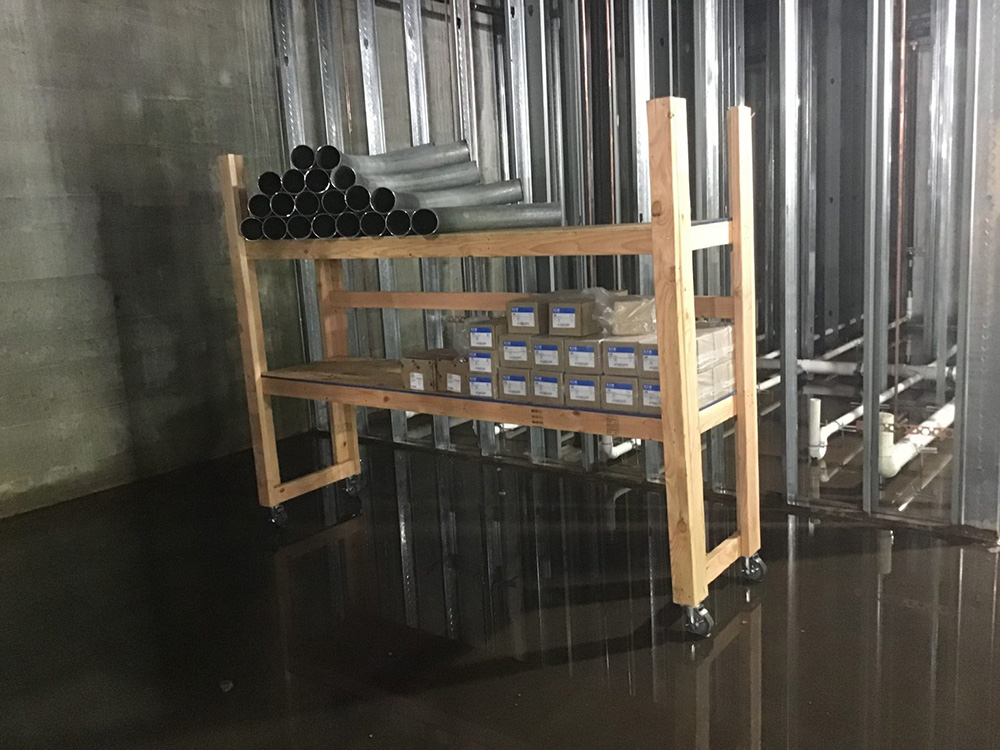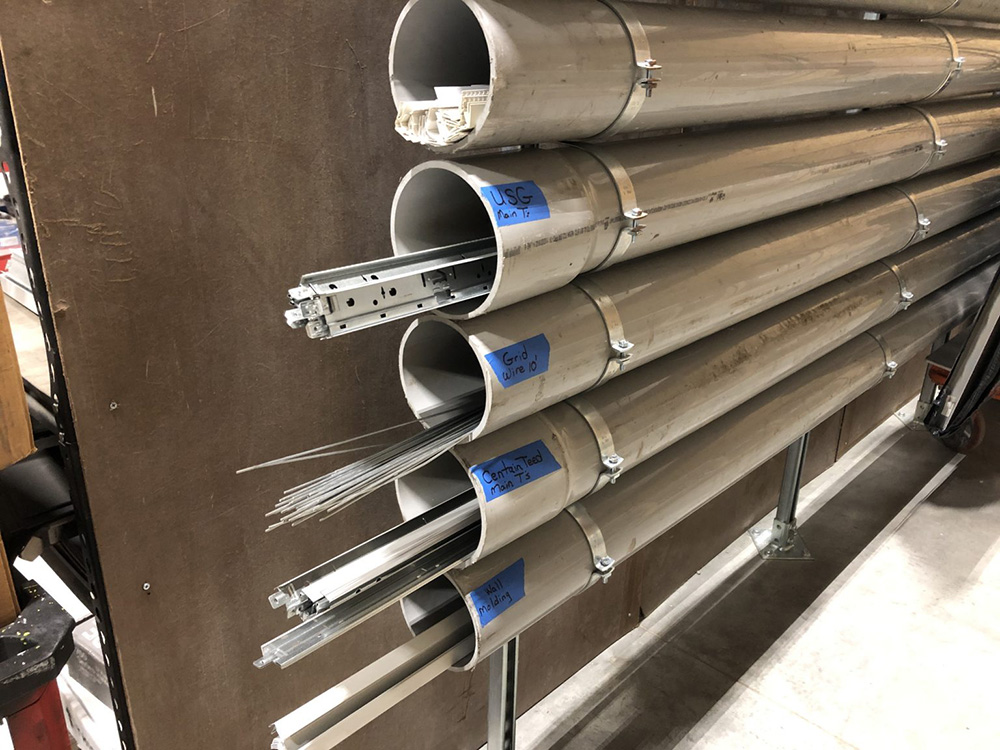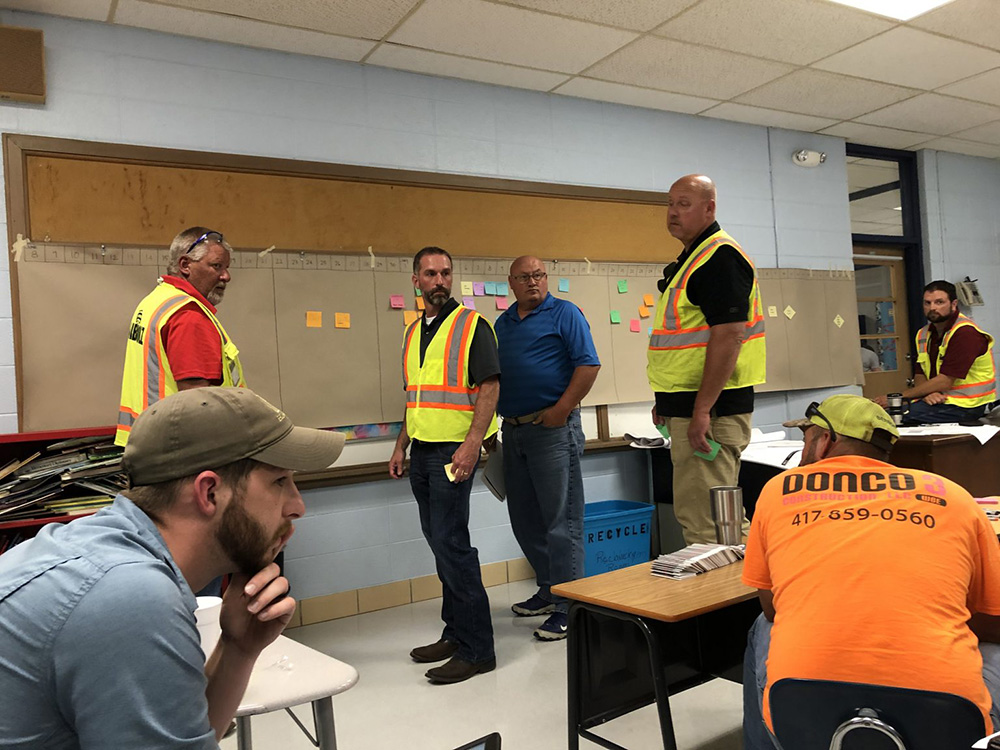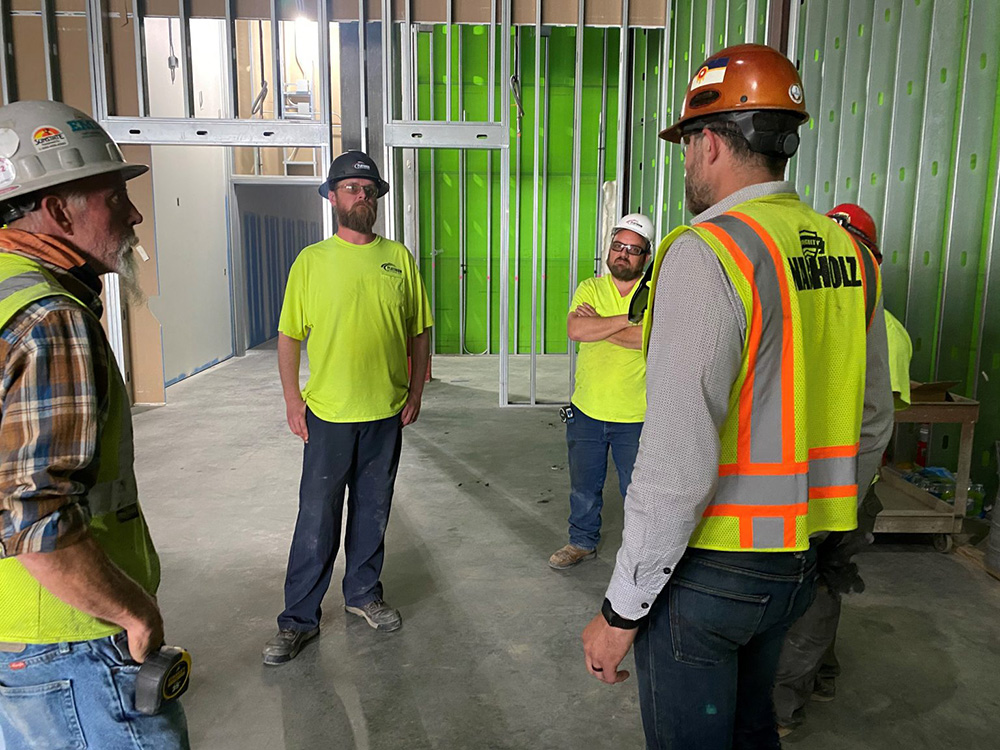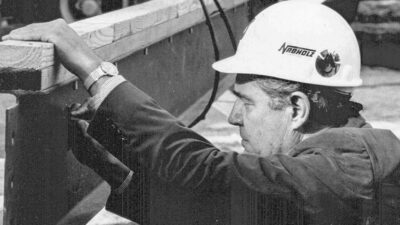Unfortunately, the construction industry can be wasteful. Inefficient processes, ineffective communication, and poor planning all cost time and money. Lean construction practices eliminate waste with improved collaboration, reliable workflow, and continuous improvement. They can also lead to safer jobsites and activities by reducing potential hazards.
There are many lean construction practices that overlap with practices that also make the job site safer. At Nabholz, we try to adopt these policies whenever possible and always strive to find points where innovation, safety, and improvement all come together.
-
- Nothing Hits the Floor is an initiative to limit piles of material that accumulate on jobsites, whether the piles are new materials staged for installation or debris that should be in containers. It also encourages workers to perform activities at a tabletop level to avoid continuous bending and squatting.
To put this in practice, consider taking the following steps
-
-
- Store materials on palettes or carts to make moving material easier and reduce the potential for injury in the moving process
- Schedule right-time delivery of materials to reduce excess inventory on the jobsite and keep workspaces clear for construction
- Utilize wheeled trash bins to promote housekeeping, prevent debris from clogging work areas, and limit trip hazards
- Work from sawhorses or benches to reduce strain on backs and knees
- Manage extension cords to reduce trip hazards
-
- Prefabrication creates a safer and more efficient jobsite by moving assembly processes on jobsites to a manufacturing process in shops. When possible, components should be fabricated in a controlled environment and shipped to the jobsite ready to be set in place.
To put this in practice, consider taking the following steps- Fabricate components in shops to limit time spent on lifts and ladders on the jobsite
- Fabricate assemblies at a workstation in a controlled shop environment to limit exposure to jobsite hazards such as rolling equipment and extreme weather
- Manufacture components on work surfaces in the shop to limit bending, squatting, and overhead reach, and reduce strain on back, knees, and shoulders
- Prefabricate sections of underground utilities to limit time spent in jobsite trenches and potentially confined spaces
- Utilize the planning required by prefabrication to build in safety controls into assemblies or modular units
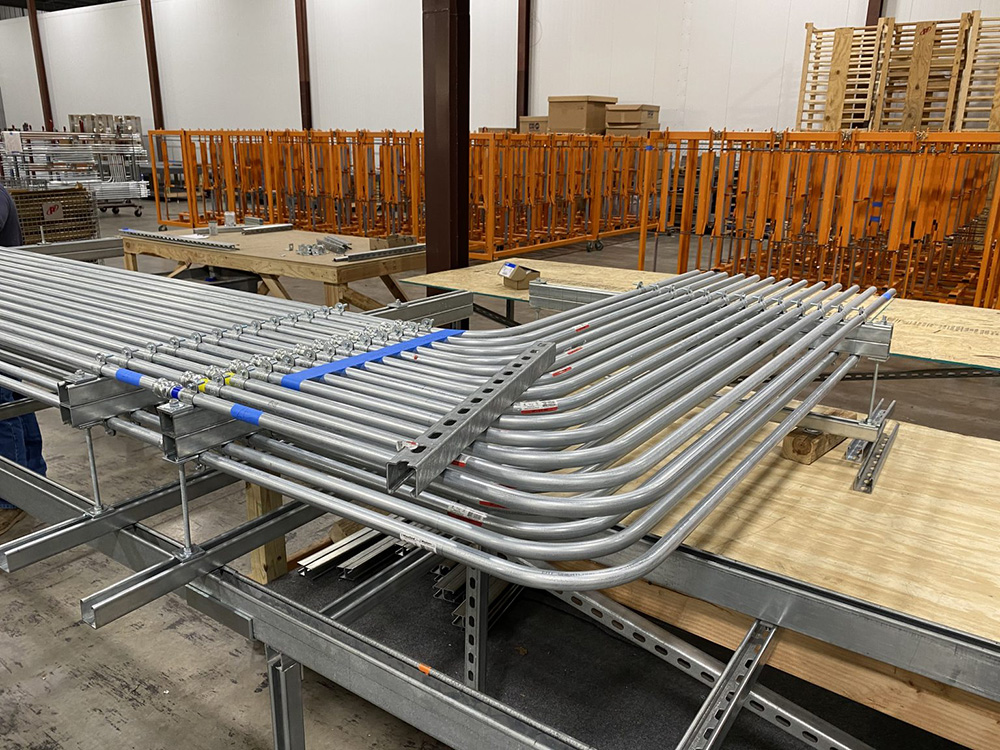
- 5S is a method of organization that keeps workspaces clean and uncluttered. The five s’s stand for sort, straighten, shine, standardize, and sustain. Apply these methods when dealing with materials, tools, and equipment to promote good housekeeping and reduce the risk of slips, trips, and other injuries.
To put the 5S’s into practice-
- Sort through materials and keep only what’s needed. Excess inventory can create unnecessary hazards and lead to inefficiency
- Straighten materials and tools in an organized fashion to reduce clutter and the risk of injury
- Shine workspaces by keeping them clean. Sweep floors to reduce slip and trip hazards. Shine tools and equipment by keeping them in good working order. Tools that aren’t maintained can lead to injury
- Standardize a schedule of maintenance to limit hazards that result from poor housekeeping
- Sustain organized workspaces to promote a culture of continuous cleanliness and safety
-
- Pull planning is a collaborative work session where we gather trade partners and work together to sequence work activities to complete project milestones on time.
Tips to make pull planning a success- Collaborate early to identify potential hazards
- Take advantage of early planning and buy-in to sequence workflow with safety in mind
- The Daily Huddle is a stand-up meeting on the jobsite where foremen spend 15 minutes each day coordinating tasks, constraints, and expectations.
To put this into practice- Engage crew leaders in frequent and intentional conversations focused on upcoming tasks, potential hazards, and measures to mitigate risks
- Have regular conversations with crew leaders about changing job site conditions and logistics and give direction on how they can prepare their workers with appropriate tools and instructions
- Gather crew leaders from all trades to encourage collaboration and teamwork
- In a Plan-Do-Check-Adjust cycle, tasks are executed in a well-planned workflow. Checking outcomes and making adjustments ensures continuous improvement. The Plan-Do-Check-Adjust cycle works well for manual practices but is the fundamental cycle all improvements are based on. To implement a Plan-Do-Check-Adjust cycle
- Plan tasks in advance to identify and mitigate potential hazards. The entire crew should complete Task Hazard Analysis to promote collaboration and ensure all teammates understand the plan
- Do the work according to the plan. If conditions change, pause the work and re-assess potential hazards
- Check the plan when the work is completed. Did the plan identify all hazards? Reduce hazards? What should be done differently next time?
- Adjust the plan as necessary. Find ways to gain efficiency, reduce waste, and improve safety the next time
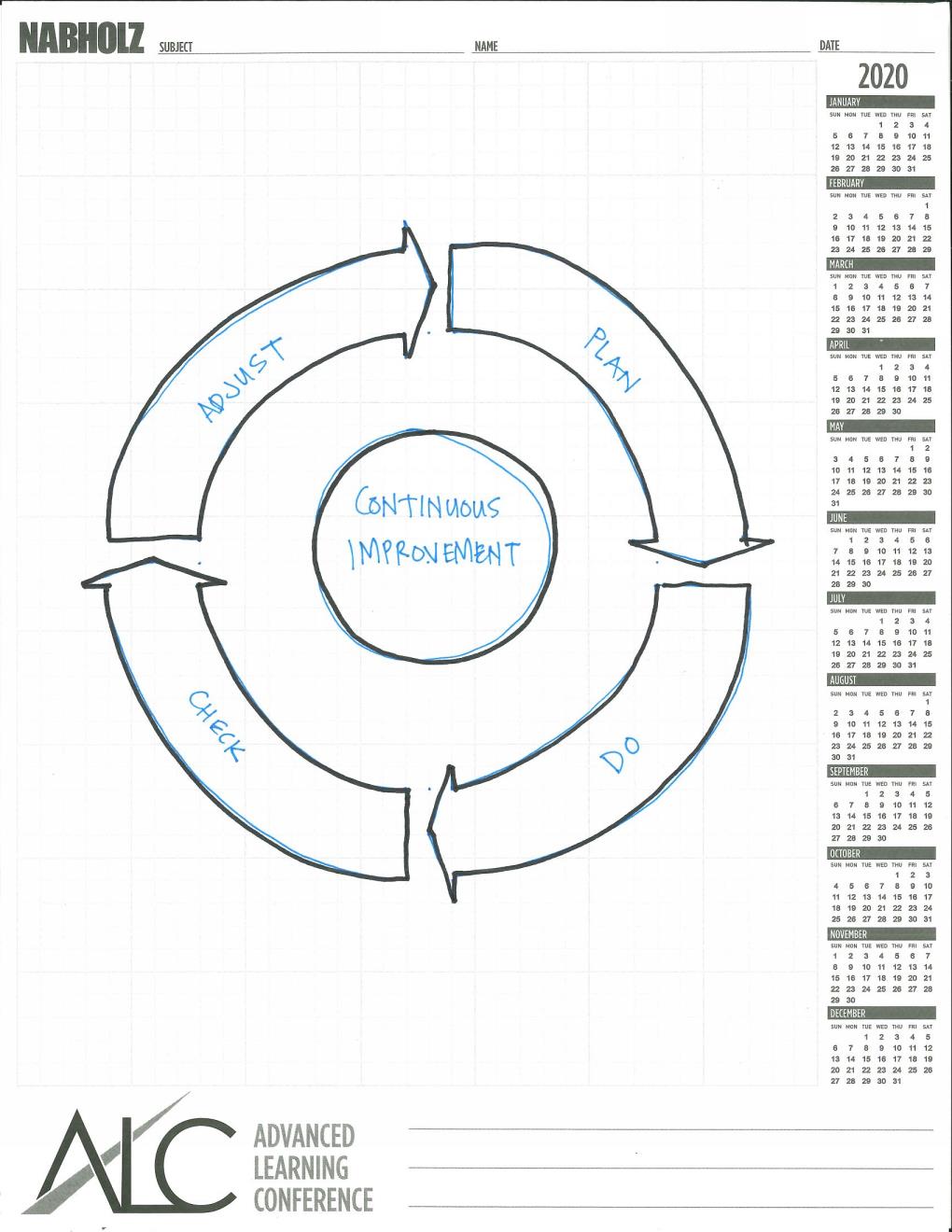
Continuous improvement in motion
